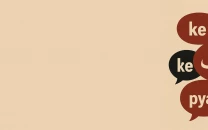Understanding Malala
The story of a young girl who just wants to go to school.

The story of a young girl who just wants to go to school.
In her autobiography, I Am Malala, co-authored by Christine Lamb, a British journalist, the 16-year-old takes us through the everyday life of a young girl in the Taliban infused city of Swat. The memoir traces her life and the incidents in her hometown that forced her to speak out publicly for the right of education for girls, long before she was shot and thrust into international limelight.
The book begins with an intriguing description of the Pashtun culture and Swat, a place she often refers to as the Switzerland of Pakistan. A brief history of the Pakistani political landscape dating back to Gen Zia’s regime, told mostly through her father’s recollection, gives a broader perspective on the geo-political dynamics that have shaped the country in its present form. We learn significantly about her father, Ziauddin Yousafzai, who once struggled for his own education. As a teacher and an activist, he persistently campaigned for the rights of the people of Swat. Unlike most men in his tribe, who mourned the birth of daughters, he took great pride in Malala and named her after a renowned female Pashtun warrior.
And Malala was every bit of the warrior that her father envisioned her to be. Using accounts from her personal life, the book allows you to see for yourself that Malala is no ordinary girl. Her spirit is almost tangible when you see her questioning everyday injustices, that even many adults have made peace with. For example, she shares the story of a 10-year-old girl married to an old man, an incident that troubled her deeply. “I am very proud to be Pashtun, but sometimes our code of conduct has a lot to answer for, especially in its treatment of women,” she says. She continues to debate the legitimacy of the Taliban mindset, especially when it came to stopping girls from going to school. And with her father’s support, she ensures that these questions make way to the right ears.
Malala’s mother, an illiterate but progressive woman, would share her concern for her daughter’s safety but would not prevent her from speaking up. In fact a poignant detail in the book is the moment her mother learns of the ruthless attack on her daughter, was the day she was to start learning how to read and write.
The book does not offer a thorough critique of the West’s military operations in the region, and it can be debated that a significant portion is a reflection of her father and Lamb’s analysis of Pakistani history and politics, rather than that of the 16-year-old herself.
However, it allows you to taste the fear of living in a regime where books are shunned and the wrong length of your beard can get you killed. It enables you to understand how bewildering the current situation in the country can be for a young child who just wants a normal life.
Published in The Express Tribune, Sunday Magazine, November 17th, 2013.



















COMMENTS
Comments are moderated and generally will be posted if they are on-topic and not abusive.
For more information, please see our Comments FAQ